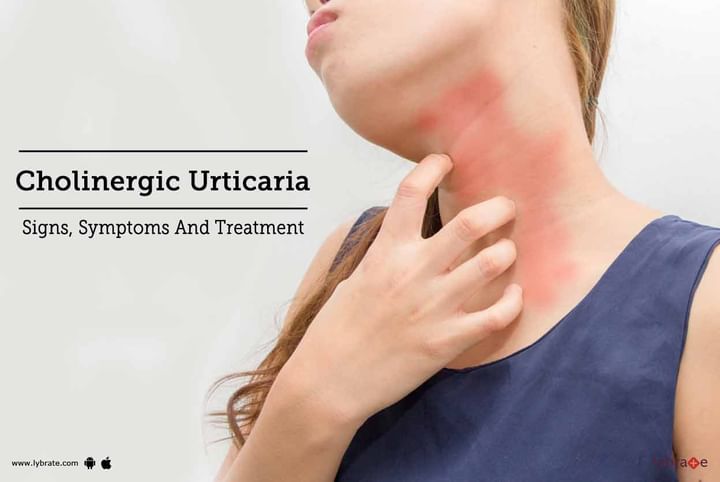Get the App
For Doctors
Login/Sign-up
Last Updated: Oct 23, 2019
BookMark
Report
Cholinergic Urticaria - Signs, Symptoms And Treatment
Dr. Deepak SharmaDermatologist • 22 Years Exp.Diploma In Dermatologist, Venereologist and Laparoscopy, MBBS
Cholinergic Urticaria is a skin problem that a dermatologist can diagnose and treat. The most common cause of this condition includes sweating. It may be of four types including poral occlusion, generalised hypohidrosis, sweat allergy and idiopathic. Mostly, the common triggers include heat and consequent sweat which can cause a variety of symptoms in the internal organs. Let us find out more about the signs, symptoms and treatment of this ailment.
- Signs: There are many signs of the onset of this ailment including a rise in the body's core temperature after physical pursuits like running, workouts, eating spicy food, fever, hot showers and even emotional stress. When there is a persistent rise in the temperature every time you indulge in such activities, it may be time to take a look at symptoms so that the dermatologist can make a proper diagnosis.
- Skin Related Symptoms: Itching and burning sensation on the skin can point at the presence of this disease. One may also find rashes that can appear on the arms and neck, as well as the areas where the skin folds and sweat percolates. Also, you may find tiny welts that can form in a cluster to give the appearance of a large growth or swelling.
- Digestive Tract Symptoms: The digestive tract may also get affected which can lead to loose motions and cramps in the abdomen.
- Respiratory Tract Symptoms: There are a variety of symptoms of this condition, including breathless and wheezing as well as changes in the respiratory tract.
- Other Symptoms: Headaches, palpitations, nausea and salivation are other common side effects and signs of overall discomfort. In very rare cases, Anaphylaxis can also set in as a symptom of this condition.
- Treatment: Ample measures will also need to be taken so as to avoid a heart attack due to sudden cooling and drops in temperature. The dermatologist can prescribe beta blockers like Propranolol as well as anti histamine drugs that can contain the symptoms of the allergic reaction. Regular everyday use of antihistamine drugs may be required for these patients. Immunosuppressants and leukotriene inhibitors can also be used in such cases.
- Lifestyle Changes: The best treatment in such cases is avoiding the allergens that trigger or cause the condition. In many cases, the patient may have to stop exercising so as to avoid the severe symptoms. The patient will also need to avoid too much exposure to ultraviolet rays which can lead to rapid desensitisation as well as autologous sweat.
Patients suffering from this condition should record and report even the smallest change to the dermatologist so that there are no serious health implications in the long run. If you wish to discuss about any specific problem, you can consult a dermatologist.



+1.svg)
